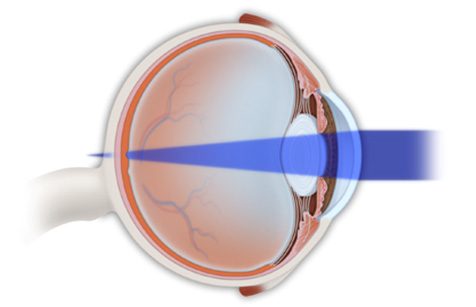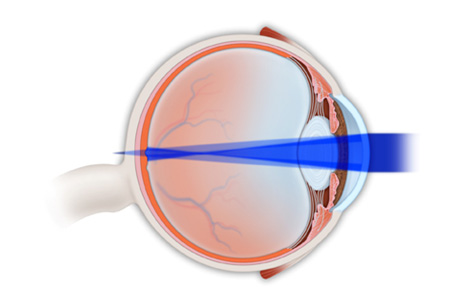For many people, the inability to see clearly is often caused by a refractive error. There are four types of refractive errors:
- Myopia (Nearsightedness)
- Hyperopia (farsightedness)
- Astigmatism
- Presbyopia
Myopia
With myopia, or nearsightedness, the distance between the cornea and the retina may be too long. This causes light rays to focus in front of the retina instead of on it. Close objects will appear clear, but distant objects will appear blurred. Eyeglasses, Contact Lenses and Laser Vision Correction are the most common methods to correct myopia.

Hyperopia
With hyperopia, or farsightedness, the distance between the cornea and the retina may be too short. This causes light rays to focus behind the retina instead of on it. In adults (but not children), distant objects will look clear, but close objects will appear blurred. Eyeglasses, Contact Lenses and Laser Vision Correction are the most common methods to correct hyperopia.

Astigmatism
Astigmatism is very common and means that the cornea is curved unevenly, like a football rather than a basketball. Light passing through the cornea is not properly focused on the retina. Both distance and close vision may appear blurry. Eyeglasses, Contact Lenses and Laser Vision Correction are the most common methods to correct astigmatism.

Presbyopia
Presbyopia is a normal condition in which your eyes gradually lose the ability to see things up close. When we are young, the natural Crystalline Lens in our eyes flex and are able to change focus easily between near and far objects.
At around age 40, this flexibility begins to gradually decrease, making it more difficult to see objects up close. Eyeglasses for reading and near vision are the most common method to correct Presbyopia. In some cases, Monovision may be an option.









